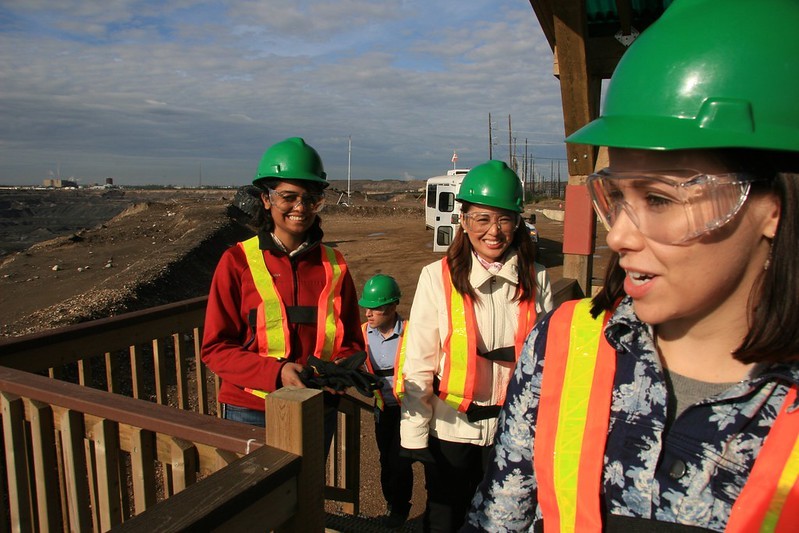The challenge: women represent about half of the population and nearly half of the Canadian workforce, but only represent about 25 per cent of the energy workforce. In a nation with a demonstrated interest in diversity and equity, representation in key sectors like energy should be proportionate to Canada’s diverse population. This mirrors other sectors such as healthcare, arts and cultural services, all of which have achieved more equitable representation of women.
These issues were the focus of a presentation I provided at the Canadian Federation of University Women (CFUW) conference in Edmonton last week. I shared information about the big challenges as well as the inspiring potential for equity seeking groups involved in the energy transition. The information is from research conducted by the Pembina Institute's Equitable Transition team.
Percentage of women in the energy industry in Canada
The following chart from our report, Canada's Energy-Fuelled Gender Gap, breaks down representation of genders by subsector.

Not only are women under-represented in the energy sector, but when it comes to representation at the leadership level, that number declines even further. In mining, quarrying, and oil and gas extraction, only 13% of leadership positions are held by women. We also see more women than men represented in administrative positions, which are lower paying on average. This is consistent with broader trends where more women occupy lower-paying roles within a company or industry which perpetuates a gendered wage gap, but also reinstates the bias that women are not able to achieve in the same ways as men in their careers.
The underrepresentation of women in leadership and overrepresentation of women in administrative roles in the energy sector is a major driver of Canada’s national wage gap.
We have seen positive steps taken by employers to promote gender equality, such as Equal by 30, the joint Clean Energy Ministerial and International Energy Agency initiative to which Canada is a signatory, but there is more work to be done. Investments and cultural shifts to normalize equality, such as diversity, equity and inclusion programs, have not resulted in significant growth in women’s leadership over time.
New energy economy should deliver diversity benefits
We need to see radical improvements and a reversal of these trends in the traditional energy industry. Similarly, there is an opportunity to set new equity standards in a clean energy and the net zero-aligned economy to realize greater social benefits for all equity-deserving groups. With projected investments of $3 trillion in the energy sector worldwide, we must ensure every dollar is spent in a way that maximizes positive impacts for workers and communities.
Modelling by the Pembina Institute and the Canadian Labour Congress shows what could be the potential workforce impact of the energy transformation in this country.
Canada will need to equip the current and future workforce with skills and knowledge to meet the upcoming labour demand – and we must make a concerted effort to recruit, retain, and extend job opportunities to newcomers, Indigenous people, women, and others who have historically been left behind.
Advancing an equitable and sustainable energy workforce requires everyone to do their part. We need employers to develop inclusive workplace policies, buy-in from leadership and executives to honour these policies, educational institutions to reinforce the importance equity principles across all fields of work, and government investment to support broader access well-paying, safe and equitable jobs in a decarbonized economy. In our report, Equitable Net-Zero, we put forward more than 50 recommendations to develop a sustainable energy workforce across four categories:
- Improve access to net-zero related training, certification and education for women
- Create flexible and safe workplaces
- Support intersectional gender-diverse leadership
- Collect disaggregated data on gender (by ethnicity, leadership level etc.), to support data transparency and ethical data use.
Metrics for equitable hiring should not simply focus on the number of represented individuals, but also representation in leadership positions, fair wages, clear streams for career development and a proven ability to retain workers representing diverse identities and backgrounds.
The energy transition is a golden opportunity to correct the gender gap of the traditional energy industry and demonstrate commitment to inclusivity moving forward through new economic opportunities. The journey to net-zero involves adding thousands of new jobs to the economy – and we have a chance to see more fairness moving forward.








